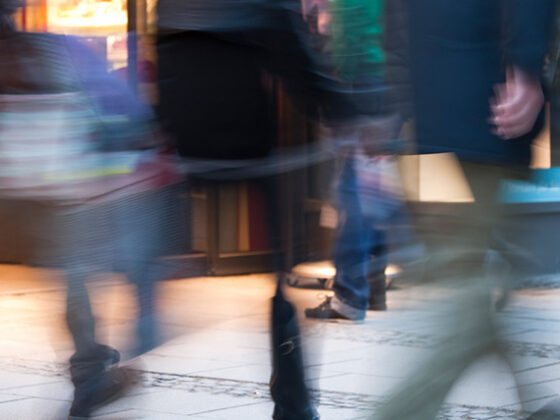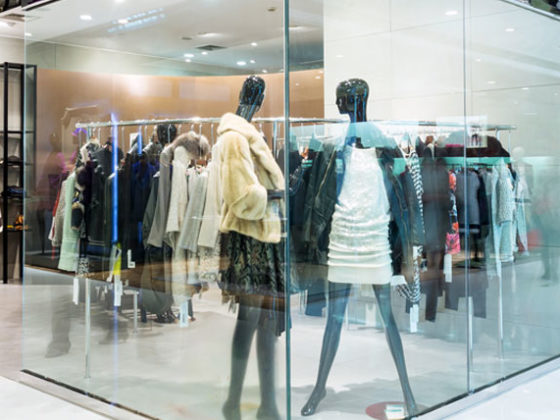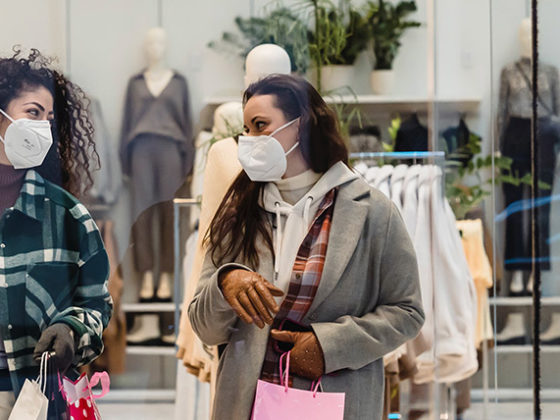March 13; a Friday the 13th, ironically enough: That’s the day most people point to in 2020 as the moment when everything changed. Up until that day, it was business as usual, with just a few conversations surfacing from the background about a new SARS virus. And then suddenly, the pandemic enveloped us. Schools closed. Retailers put up signs indicating that they were temporarily closed. No one knew then that we would endure 12 full months of turmoil before the light at the end of the tunnel stopped looking like a freight train headed straight for us.

The Biggest Disruption to Retail
We’re always talking about innovation and technology disrupting the status quo – Uber, Netflix, and others are typified as brands that have changed the face of their industries. But the pandemic has been the biggest disruptor to retail ever. The short-term goal to survive this disruption was shoring up liquidity. Then came the realization that there was no quick fix in sight – which forced most retailers to take actions that would have otherwise taken years to implement – curbside pickup, online ordering, app development, and the employing of AR. These measures were the hardest to navigate for those brick-and-mortar retailers that hadn’t at least started building the framework for technology’s role in retail – and many of them did not survive. For a while, there was pure panic – and a lot of number crunching. And we had no one to help us.
Lack of Representation for Retail
In Episode Four of CBUS Retail’s COVID Chronicles, we reflected on those first few days. We worked with Alvarez & Marsal and put out an invite for retail leaders to jump on a call; overnight we had 100 C-suite retail executives and even some landlords on the phone. It was then that we realized how significant of an event the pandemic really was, and what we heard on that call was that no one could pay rent and still have the cashflow they needed to try to survive. Without a strong, unified, central voice on Capitol Hill to lobby for aid, we decided to use that call to brainstorm–not just for individual retailers but for the retail ecosystem as a whole–what was essential to survive, including relief to landlords. Congress still does not place the importance it should on retail, given the impact it has on the overall US economy.
Take A Breath, but Don’t Stop
A year later, we’ve finally reached a point where we can take a breath. Vaccine rollout is going strong. More than 90 million Americans have received stimulus payments. And those payments were expanded to include all dependents, not just those under age 17. The new administration is pushing for vaccines to be available to all adults by May, and they’ve started testing vaccine safety on teens. By mid-summer, there is an expectation – maybe not for a return to “normal” – but at least for a return to in-person events and experiences.
Where Does Specialty Retail Fit in This Future?
Excitingly enough, the answer is everywhere. Not just physically, although we’ll be talking more about the need to reevaluate the future of retail location strategy. But specialty retail fits everywhere consumers are – in malls, in neighborhoods, in popups at events, in their living rooms, on their phones – everywhere. People have money, they feel safer, and they’re ready to shop. They’re tired of staring at screens; they’re tired of transactional interactions. They want to touch, feel, and experience the inside of a store again.
What we saw during the worst days of the pandemic was that retailers are tough. When things were at their worst, they figured it out. They adapted, pivoted, and quickly implemented the changes that would let them continue to take care of their customers and maintain some source of revenue. And they did it without long-term studies and budget meetings and RFPs. They just took action.
If we take anything from this pandemic, hopefully it’s the knowledge that in a time of crisis, the retail industry can act swiftly, think long-term, and take care of more than just their own bottom line. This is, to us, the greatest source of hope for the future of retail.




